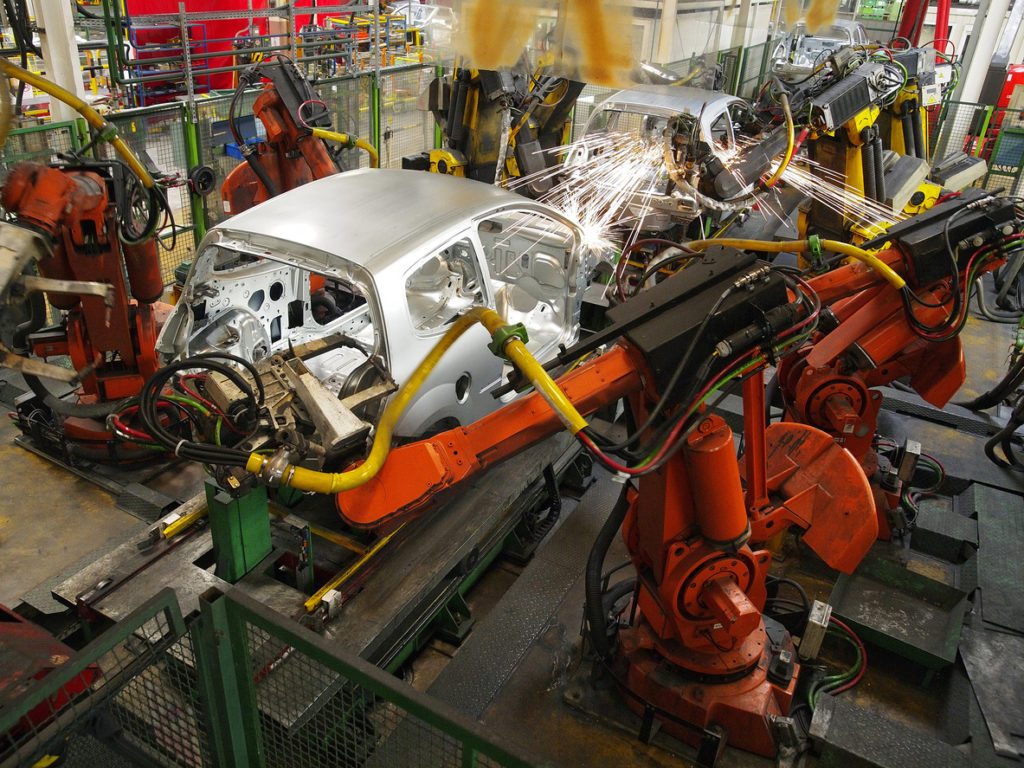Robots in Automotive Manufacturing: Top 6 Applications
 The automotive manufacturing industry has always been one of the fastest and most extensive adopters of industrial robotics. As technology continues to evolve, the use of robots in this sector is becoming even more widespread and essential. From assembly lines to precision tasks, robots are now an integral part of the production process, making it one of the most automated industries globally.
The automotive manufacturing industry has always been one of the fastest and most extensive adopters of industrial robotics. As technology continues to evolve, the use of robots in this sector is becoming even more widespread and essential. From assembly lines to precision tasks, robots are now an integral part of the production process, making it one of the most automated industries globally.
While there are countless robotic applications within the automotive field, a few stand out as the most common and impactful. These six robotic applications have proven to be the most valuable, helping manufacturers improve efficiency, reduce costs, and maintain high-quality standards.
The Top 6 Robotic Applications in Automotive Manufacturing
Here are the six most frequently used robotic applications in the automotive industry:
1. Collaborative Robots (Cobots)
Collaborative robots are designed to work alongside human workers and other machines on large-scale assembly lines. They help streamline operations by handling complex tasks such as welding, assembling, and quality checks, all while ensuring safety and efficiency.
2. Robotic Painting
Painting is a critical step in vehicle manufacturing, but it’s also one of the most hazardous and labor-intensive. Robots excel in this area because they can apply paint consistently and with minimal waste, reducing costs and improving worker safety.
3. Robotic Welding
Welding is one of the most important processes in building a car, and robotic welding has been at the forefront of automation for decades. It ensures precision, speed, and consistency, which are crucial for maintaining product quality and meeting production targets.
4. Robotic Assembly
In many automotive plants, robots are responsible for assembling smaller components such as engines, transmissions, and electrical systems. They also handle tasks like windshield installation and wheel mounting, significantly increasing throughput and reducing manual labor.
5. Material Removal
Robots are ideal for tasks that require high precision and repetition, such as trimming, cutting, and polishing. This includes removing excess material from plastic parts, metal castings, or fabric components, ensuring consistent quality across the production line.
6. Part Transfer and Machine Tending
Handling heavy materials, pouring molten metal, and loading/unloading CNC machines are all dangerous and repetitive tasks that robots perform efficiently. Their reliability and consistency contribute to improved productivity and reduced downtime.
As the automotive industry continues to embrace automation, the role of robots will only grow. These six applications represent just a portion of what's possible, but they highlight the immense value that robotics brings to modern manufacturing.
Genesis has been a key player in the global automotive industry for many years. Explore our case studies and discover how we help companies integrate robotic solutions into their production lines. Visit our Automotive Robotics and Integration section to learn more about our services.

Mineral Mixer Tank,Gold Mixing Tank,Mining Mixer Tank,Copper Stir Mixer Tank
henan ascend machinery , https://www.ascendminingcrusher.com